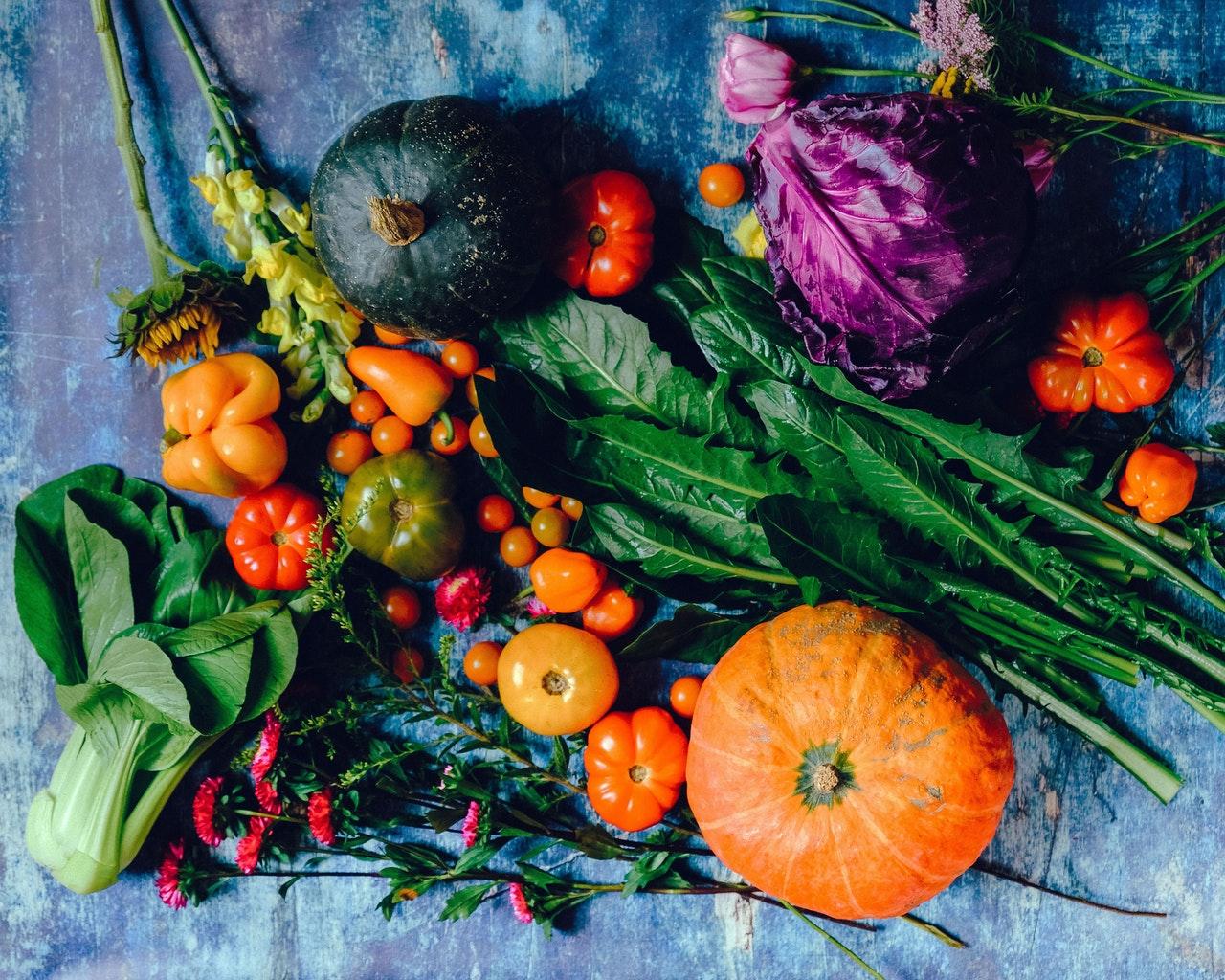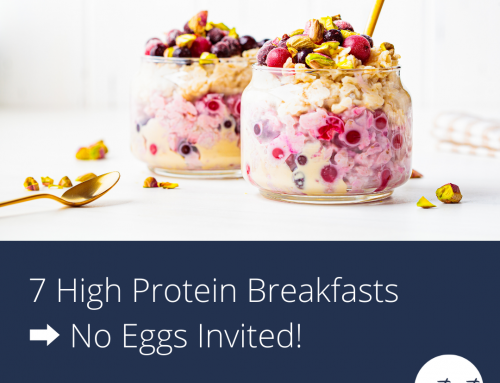Want steadier energy throughout the day (and to get rid of that sleepy slump after lunch)?
Working on weight loss but tired of feeling hungry an hour after a meal?
Trying to keep your gut moving at a healthy pace?
Fibre, arguably the least sexy and sellable of all the nutrients, is the unsung hero of weight loss, digestive health, and awesome energy. It’s a fantastic example of why focusing on getting enough of the good stuff (instead of what not to eat) is so important to reaching your goals. Not convinced? People with the highest fibre intake had an 80% (80 – friggin-percent) greater chance of living long AND healthy lives out of all food factors studied.
Our current society typically sits at 15 grams or less per day (about half of what we need) and traditional societies ate almost 5-6 times more than our current recommended minimums and had more diverse gut bacteria, less/absent chronic disease, and a whole host of other benefits. I’m not suggesting you go from 15 grams to 150 grams today (in fact, I advise against it!) but it pays to start working towards a healthy base.
We know we should eat it, we might even take supplements like Metamucil to boost it, but it often feels like one of those “because the dietitian says so” kinda things. And now that fall is here, the crisp air and snippets of sunshine (and many pumpkin spice treats) abound, the way we eat starts to shift towards comfort foods and lower fibre meals which can derail our efforts to feel energized and see momentum with our nutrition goals. Less fresh, delicious and fibre rich summer berries and veggies double down on the shift, and we feel slower and more sluggish as the weeks go by. So let’s take a look at who bumping fibre up is key for, and some simple ways to get more without overhauling your entire meal plan.
What is fibre anyways?
Fibre is essentially an indigestible carbohydrate – our bodies do not produce the enzymes needed to break down the complex molecules and this is a good thing! Fibre both stimulates the cells lining our gut and serves as food for healthy gut bacteria which have no trouble breaking down its tough bonds.
Feeding the good gut bacteria is where many of the long term health benefits come from. Good gut bacteria looove the hard to digest fibre, and when we have more of them they out-compete or kill off “bad” bacteria that trigger unhealthy immune response, inflame our gut and can influence everything from mood, to cholesterol, to bloating and gas, and more. Healthy gut bacteria fuelled by a diet diverse in plant food fibres act like mini drug factories and produce compounds that regulate the immune system and help keep the alarm bells of inflammation off. Many studies show that increasing the amount and types of fibre in your diet has a much more positive long term effect than probiotics – so start with food before moving on to supplementing.
Fibre also helps slow down digestion and absorption allowing us to feel fuller longer, and get a nice steady stream of energy over hours instead of the quick bump (and crash) of a low fibre meal. This is key both for weight loss which relies heavily on keeping hunger hormones in check to prevent rebound gain, and improving daily energy (key for feeling awesome, but also for maintaining motivation to eat well, exercise and do all the other good stuff).
Where is fibre anyways?
Fibre is highest in these types of foods:
Beans and legumes: Chickpeas, black beans, lentils and the like are all VERY high in fibre. Add even a few spoonfuls to a salad for your carb, or mix in lentils with your ground beef in a tomato sauce to boost your intake. I love throwing the roasted chickpeas (I buy mine pre-made but you can find lots of recipes online) on salads as a “crouton” too.
Seeds: Pumpkin seeds (pepitas), flax seed (ground), chia seeds, sesame seeds, sunflower seeds. They’re all a great source of fibre! Keep it to a spoonful or two here or there to keep calories manageable but what an easy boost to salads, smoothies, and snacks.
Dark leafy greens: Not only do they have more micronutrients than their paler counterparts, but the darker and hardier leafies tend to have more fibre too. Think kale, arugula, swiss chard, field mix, and spinach instead of iceberg and pale Greenleaf lettuce.
Old school root vegetables: Winter squashes like butternut or acorn, turnips, carrots, beets, and parsnips (especially these guys! Great mashed in with regular potatoes and a little bit of parm).
There’s a nice summary of how much is in each veggie from Dietitian’s of Canada here if you’re interested!
How much do you need?
If you’re a tracker or someone who finds data helpful to shoot for, I’ve included the dietary reference intake numbers below. For those of you who prefer a what/when to eat guideline, skip the numbers to my recommendations for how to get enough fibre without trying too hard.
Women:
19+ years old: 25 grams or more.
The actual RDA actually goes down to 20 grams after age 50, but I find my clients have better controlled blood sugar (hello, diabetes prevention), lower “bad” cholesterol (goodbye to excess heart attack risk), and we see reduced risk of gastrointestinal cancers with a higher intake. So aim to stay above 25 grams if you can.
Men:
19+ years old: 38 grams or more.
Same as with women, the RDA drops to 30 after 50 years old but it remains an important nutrient for preventing a number of big chronic diseases so I’m encouraging you to aim high. You’re worth it!
Guidelines for everyone:
Like most of you, I don’t track my food every day. It’s a useful tool for change, but not a permanent strategy for eating well. Keep your fibre intake up with the following guidelines. If they’re new to you, pull them out when you’re meal planning and making a grocery list so they’re integrated in to your week. That way you’re not stressing daily about getting enough!
- 2-3 big handfuls of a dark leafy green daily. Have a salad, throw them in a soup or under leftovers when reheating, or drop them in a smoothie.
- Balance your plates – 2-3 cups (raw) of non-starchy vegetables at each meal.
- Choose 1 daily fibre booster: 1-2 Tbsp of chia, psyllium husks, seeds (pumpkin, flax, sesame etc) in your smoothie, sprinkled on a salad or over top of your leftovers.
- Every snack needs a plant food: include 1 cup of berries (fresh or frozen) or 1 cup/big handful of non starchy veggies like broccoli, snap peas, or another dippable veg.
- Keep your carbs “whole”: whole foods or those that have been minimally processed retain more fibre than any processed food (those that are milled into flours like pasta, bread etc – both regular or gluten free). Choose chickpeas/beans, beets, turnips, carrots, winter squashes like acorn/butternut, berries or whole grains like farro/quinoa/wild rice/brown rice
Tricky spots: Marketing Tricks and Digestive Woes
Like all nutrients, sometimes it gets a bit trickier with packaged foods or supplements. So let’s wade through what’s real and what’s hype.
High fibre “white” or processed foods (white breads, yogurts, crackers, granola bars etc) are touted as the answer to getting enough fibre without actually eating whole foods.
The fibre used in these foods is usually inulin or chicory, both of which are technically a fibre. However, research seems to show that a diet getting most of its fibre from these isolated versions doesn’t have the same benefits as those getting fibre from real food. No surprise here, but we can’t manufacture a healthy diet. Gut bacteria also thrive on diverse fibres (a variety of sources) so it’s okay to include these foods as a small piece, but you still need to focus on getting the whole foods in. These same high fibre “white” breads and crackers will also be missing the other nutrients whole high fibre foods provide – B vitamins for energy, essential fats and other healthy additions lost in processing. Anecdotally, I also find diabetic clients who track their blood sugars notice that the blood sugar spike with these foods is much more similar to the regular white version than the whole grain one.
If you already have digestive woes, or are starting to increase fibre it’s important to be a little cautious. Aim to increase fibre gradually over time – as your good gut bacteria get food they are going to “ferment” it which can cause gas and bloating if added too quickly. Additionally, add lots of extra fluid to go with your new fancy fibre intake to keep things hydrated and moving through. Otherwise you may get temporary discomfort or constipation.
If you already suffer from gas or bloating, you may need to support gut healing before bumping your fibre up too far. The isolated fibres inulin and chicory are both VERY “fermentable” so they’ll produce a lot of gas in an unbalanced gut. Avoid them if you have irritable bowel syndrome, dysbiosis or another more complex gut disorder until we get to the bottom of the issue.
Take home? These foods aren’t any worse than their regular counterparts and may give a small benefit. Keep your focus on finding whole or less processed foods you enjoy that will help you get enough fibre the way nature intended.
Loved this post? It originally went out to our email newsletter, but got so much feedback I wanted to share it here. If you’d like to get in on our emails all things nutrition so you can get clarity and confidence on what you’re eating, join us here!







